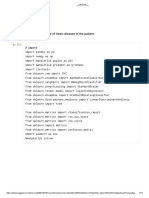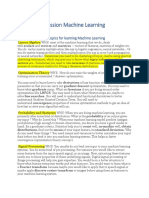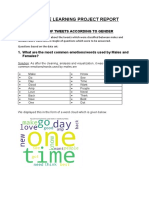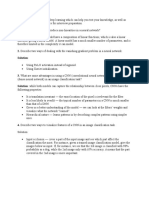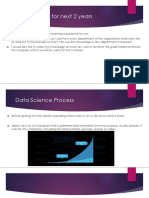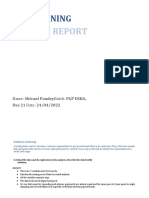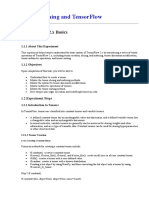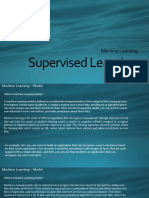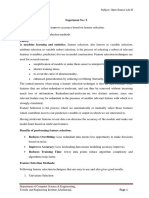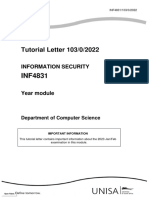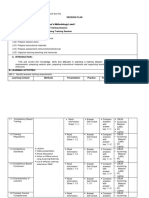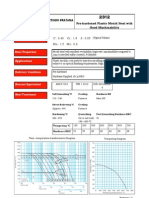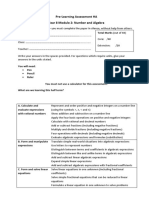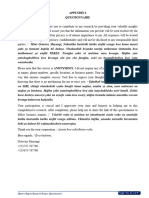0% found this document useful (0 votes)
572 views7 pagesFeature Selection in Python ML
The document discusses 3 feature selection techniques in machine learning:
1) Univariate Selection uses statistical tests to select the features with the strongest relationship to the target variable.
2) Feature Importance extracts the importance score of each feature from a tree-based model, with higher scores indicating more important features.
3) Correlation Matrix with Heatmap identifies which features are most correlated to the target variable using a color-coded correlation matrix. The techniques are demonstrated on a mobile phone price dataset.
Uploaded by
Дхиа ЕддинеCopyright
© © All Rights Reserved
We take content rights seriously. If you suspect this is your content, claim it here.
Available Formats
Download as PDF, TXT or read online on Scribd
0% found this document useful (0 votes)
572 views7 pagesFeature Selection in Python ML
The document discusses 3 feature selection techniques in machine learning:
1) Univariate Selection uses statistical tests to select the features with the strongest relationship to the target variable.
2) Feature Importance extracts the importance score of each feature from a tree-based model, with higher scores indicating more important features.
3) Correlation Matrix with Heatmap identifies which features are most correlated to the target variable using a color-coded correlation matrix. The techniques are demonstrated on a mobile phone price dataset.
Uploaded by
Дхиа ЕддинеCopyright
© © All Rights Reserved
We take content rights seriously. If you suspect this is your content, claim it here.
Available Formats
Download as PDF, TXT or read online on Scribd
/ 7





